Question 1:
The rudimental mechanism of the pressing device was to judge among the two components who pressed each of the buttons in front of them ten times the fastest. Meanwhile, we are using button switches, which was basically the simple connect and disconnect of the flow. In such way, we were catering ourselves to the machine, communicating with the computer in its way. Using the analogy of from “How the Computer Sees us”(2004) by Dan O’Sullivan and Tom Igoe where desk computers perceive the users as creatures with one finger, two eyes and ears, the low level game we built might sculpture the players’ images as the one only organ, namely fingers, with merely enough strength to press buttons. Thus, to increase the computers’ perception towards human movements, so as to increase the man-machine interactivity , we could replace the button with a switch that could capture more changes proceeded by human activity. In this case the switches were the “transducers to convert between the physical energy appropriate for your project and the electrical energy used by the computer”(O’Sullivan & Igoe, 2004) and improving the transduction process could bring the game to a higher level. Hence, I propose a new switch that could intake sounds of patting as “inputs” (O’Sullivan & Igoe, 2004). As the players pat on a random hard object, the switch would hear the sound and connect the circuit it controls. Thus, with the new switches, the game turns into a race of speed-patting, that is whoever pats most quickly wins.
Question2:
The resistor was used as a pull-up resistor or a pull-high resistor. + 5V power was connected to give the pin a high-level current by default; Switch pressed, the current turns to low level.
Question3:
On reading “The Arduino Way”, I found the core of its mechanism of producing electronic artifacts was efficiency. The way of Arduino was the pursue of lowest cost in time, material and money, one of the major ways of which was to compile ready-made products from others to produce your own products. A very quintessential example I could find was the artifact built by Shyu Ruey-Shiann, One Kind of Behavior. The artist was inspired “within the landscape of nature, languid movements of opening and closing of the hermit crab’s shells, a stark contrast to contemporary society where things move at high speed.”(2014) She utilized iron buckets, circuits and sensors, as well as other ready-made equipments. 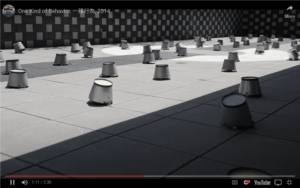 It detected natural movements to generate corresponding sounds with the drumming of the iron buckets. It was the an artifact of low cost while it was creative and interactive enough, which was to the spirits of the “Arduino Way”.
It detected natural movements to generate corresponding sounds with the drumming of the iron buckets. It was the an artifact of low cost while it was creative and interactive enough, which was to the spirits of the “Arduino Way”.
Documentation:
The first two task was rather easy where I met no trouble, because all I have to do was to follow the steps, building circuits and finding the corresponding sets of codes.
Recording for Fading
Recording for NEVER GONNA GIVE U UP
Recording for the Race
In the building of the race circuit, we met trouble in building circuit. The bread board in the blueprint presented was not the of the same size of ours. Thus, we had to rebuild it based on the logical connections of different elements. It was hard, but following the left-to-right rule, we made it.
Schematic:
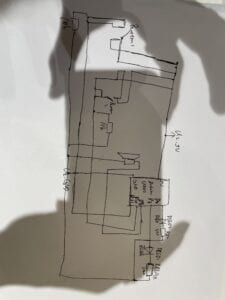
Ruey-Shiann, Shyu. “One Kind of Behavior”(2014). hello circuits. https://hellocircuits.com/2014/08/03/one-kind-of-behavior-by-shyu-ruey-shiann/
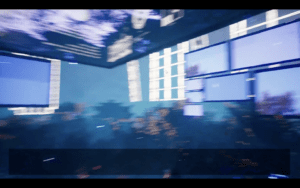
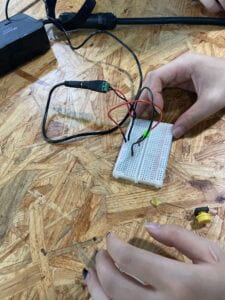 Before we proceeded the construction of the circuits, we tried to understood the rudimental structure of the bread board that was distributed to us beforehand. With the help of both professors and the assistants, we caught hold of that the board was symmetrically build while each side was made of 2 parts, dividing by a blue line, of which, one was for the plug-in for the rudimental power supply and the other was for the build-up of the circuit.
Before we proceeded the construction of the circuits, we tried to understood the rudimental structure of the bread board that was distributed to us beforehand. With the help of both professors and the assistants, we caught hold of that the board was symmetrically build while each side was made of 2 parts, dividing by a blue line, of which, one was for the plug-in for the rudimental power supply and the other was for the build-up of the circuit. 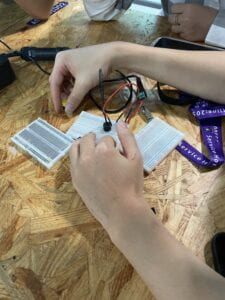
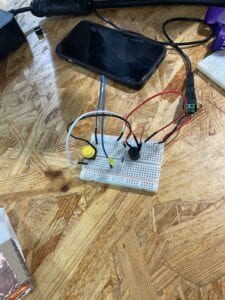
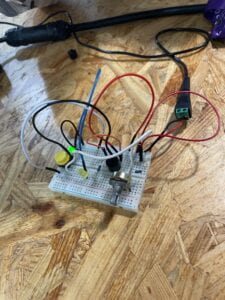
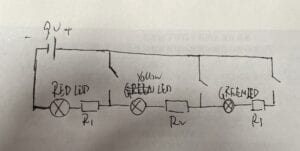 Question 2
Question 2